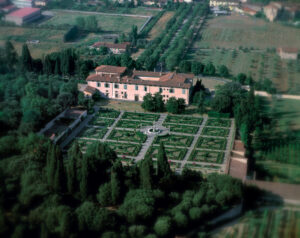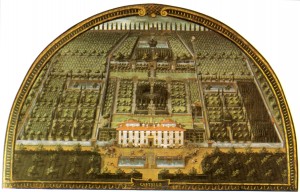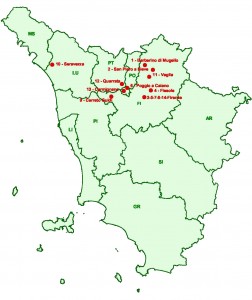Medici Villas

Icomos has favourably recommended the famous Medici Villas and Gardens as a future UNESCO World Heritage Site…
Fourteen villas and gardens from the 15th and 16th century by the family Medici was proposed as a future World Heritage Site in 2006. Recently the application was approved by ICOMOS, which acts as the advisory board for UNESCO, thus paving the way for a final recognition, pending a reworking of the detailed management plan.
The site consists of 14 villas and gardens located in 4 provinces and 9 municipalities built by members of the Medici Dynasty from 1359 to 1624. These 14 have been chosen amongst 36 potential villas. Belonging to the Medici Dynasty were a series of leading figures, the founding father, Cosimo, his son Lorenzo il Magnifico, the Popes Leo X and Clement VII as well as Catherine de ‘Medici, who was queen of France (to name but a few).
Not only dominating the political and economic scene, they were they were extraordinary patrons of the arts and basically responsible for the renaissance.

According to the proponents the ultimate expression of the Medici power was accomplished in the form of the “garden villa”, a visual representation of the transformation of the medieval feudal (embattled) landscape into a peaceful garden party; as such it is considered the first “suburban” dwellings, pointing towards the present with its ubiquitous sprawling cities of small “villas”.

The first Medici villas were the Villa del Trebbio and that at Cafaggiolo; both were originally strong fortified houses built in the 14th century in the Mugello region, the original home of the Medici family. However, in the 15th century, Cosimo de’ Medici rebuilt these plus started out building at Careggi and Fiesole. His master architect was Michelozzo at Careggi and Fiesole. According to the original layout these villas were still quite “severe”, though a series of additional recreational spaces: courtyards, balconies, and gardens served to lighten the general ambience.
Gradually, Florence became surrounded by a collection of Medici villas, with others in more distant parts of the Grand Duchy of Tuscany. By the end of the 16th century, there were at least 16 major estates, with at least another 11 of secondary interest (mainly owned for agricultural reasonsor owned by the Medici family for a short time). Together with a constellation of farms and hunting lodges throughout Tuscany, various members of the dynasty used them for recreational purposes.
In the 17th century the Flemish painter Giusto Utens painted a series of lunettes depicting the main Medici villas in the 17th century, which are now held by the I Musei Civici Fiorentini
Read more about the 14 villas here:
- Villa Cafaggiolo
- Trebbio Castle
- Villa of Careggi
- Villa Medici in Fiesole
- Villa di Castello
- Villa di Poggio a Caiano
- Villa Petraia
- Boboli Gardens
- Villa di Cerreto Guidi
- Palace of Serravezza
- Garden of Pratolino
- Villa La Magia
- Villa of Artimino
- Villa del Poggio Imperiale
A good place to start gathering information is at the website: Palazzo Medici with The Mediateca Medicea
More about the proposition can be found at the official website dedicated to the promotion of the Medici Villas as World Heritage
Read the report from ICOMOS concerning the proposal “The Medici Villas and Gardens”
No comments:
Post a Comment